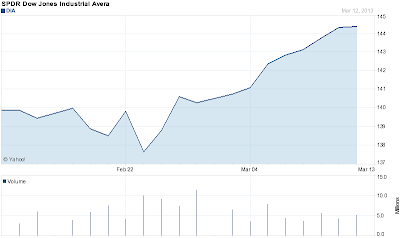Brexit Vote Delayed – Murder of Jo Cox a Cause for Introspection
Our founder earned clients a 23% average annual return over five years as a stock analyst on Wall Street. "The Greek" has written for institutional newsletters, Businessweek, Real Money, Seeking Alpha and others, while also appearing across TV and radio. While writing for Wall Street Greek, Mr. Kaminis presciently warned of the financial crisis.
Brexit Vote Delay
The U.K. referendum to decide whether to remain or to leave the European Union has divided the Kingdom in two. The citizenry is so evenly divided that global financial markets are fluctuating like the ocean does between two opposing storms. Uber-investors like George Soros have issued all-out warnings and have gone to gold, driving up the price of mankind’s default currency substantially. Meanwhile, the values of the British pound and the euro have tumbled against other currencies due to the unknown fallout risk from the possible breakup. But then on Thursday, something happened that felt like a slap to the face of the entire civilized world.Jo Cox, a young and vibrant MP for the opposing Labor Party, not to mention a mother of two, was shot by a 52 year-old man. Why? She died of her wounds within minutes of the tragic national wake up call. Now, today, the British are rethinking just how important this supposed critical vote really is. Is it worth killing one another over?
As a result of the murder, and announcements by the two campaigns that each would suspend their activities today and likely tomorrow, currencies, commodities and equities all reversed course sharply. It was a sign of how important a move would occur if Brexit were voted down, and it was also a sign of what might occur if the U.K. referendum is delayed. Stocks and oil will rip higher and gold will collapse.
It is now squarely on the shoulders of the leaders of the nation to call for national introspection. I hope to see Prime Minister Cameron address his nation with this somber tone and message, because the political fervor of the Brexit campaign is as guilty as the man who pulled the trigger for that poor young lady’s death. Every Britain, and every American now engaged in similarly polarizing rhetoric, should search their hearts now and apologize to one another for the division they allowed to flourish. May her memory be eternal and the lesson of her death be never forgotten.
Please see our disclosures at the Wall Street Greek website and author bio pages found there. This article and website in no way offers or represents financial or investment advice. Information is provided for entertainment purposes only. Article should interest investors in SPDR Dow Jones Industrial Average (NYSE: DIA), SPDR S&P 500 (NYSE: SPY), PowerShares QQQ Trust (Nasdaq: QQQ), ProShares Short Dow 30 (NYSE: DOG), ProShares Ultra Short S&P 500 (NYSE: SDS), ProShares Ultra QQQ (NYSE: QLD), NYSE Euronext (NYSE: NYX), The NASDAQ OMX Group (Nasdaq: NDAQ), Intercontinental Exchange (NYSE: ICE), E*Trade Financial (Nasdaq: ETFC), Charles Schwab (Nasdaq: SCHW), Asset Acceptance Capital (Nasdaq: AACC), Affiliated Managers (NYSE: AMG), Ameriprise Financial (NYSE: AMP), TD Ameritrade (Nasdaq: AMTD), BGC Partners (Nasdaq: BGCP), Bank of New York Mellon (NYSE: BK), BlackRock (NYSE: BLK), CIT Group (NYSE: CIT), Calamos Asset Management (Nasdaq: CLMS), CME Group (NYSE: CME), Cohn & Steers (NYSE: CNS), Cowen Group (Nasdaq: COWN), Diamond Hill Investment (Nasdaq: DHIL), Dollar Financial (Nasdaq: DLLR), Duff & Phelps (Nasdaq: DUF), Encore Capital (Nasdaq: ECPG), Edelman Financial (Nasdaq: EF), Equifax (NYSE: EFX), Epoch (Nasdaq: EPHC), Evercore Partners (NYSE: EVR), EXCorp. (Nasdaq: EZPW), FBR Capital Markets (Nasdaq: FBCM), First Cash Financial (Nasdaq: FCFS), Federated Investors (NYSE: FII), First Marblehead (NYSE: FMD), Fidelity National Financial (NYSE: FNF), Financial Engines (Nasdaq: FNGN), FXCM (Nasdaq: FXCM), Gamco Investors (NYSE: GBL), GAIN Capital (Nasdaq: GCAP), Green Dot (Nasdaq: GDOT), GFI Group (Nasdaq: GFIG), Greenhill (NYSE: GHL), Gleacher (Nasdaq: GLCH), Goldman Sachs (NYSE: GS), Interactive Brokers (Nasdaq: IBKR), INTL FCStone (Nasdaq: INTL), Intersections (Nasdaq: INTX), Investment Technology (NYSE: ITG), Invesco (NYSE: IVZ), Jefferies (NYSE: JEF), JMP Group (NYSE: JMP), Janus Capital (NYSE: JNS), KBW (NYSE: KBW), Knight Capital (NYSE: KCG), Lazard (NYSE: LAZ), Legg Mason (NYSE: LM), LPL Investment (Nasdaq: LPLA), Ladenburg Thalmann (AMEX: LTS), Mastercard (NYSE: MA), Moody’s (NYSE: MCO), MF Global (NYSE: MF), Moneygram (NYSE: MGI), MarketAxess (Nasdaq: MKTX), Marlin Business Services (Nasdaq: MRLN), Morgan Stanley (NYSE: MS), MSCI (Nasdaq: MSCI), MGIC Investment (NYSE: MTG), NewStar Financial (Nasdaq: NEWS), National Financial Partners (NYSE: NFP), Nelnet (NYSE: NNI), Northern Trust (Nasdaq: NTRS), NetSpend (Nasdaq: NTSP), Ocwen Financial (NYSE: OCN), Oppenheimer (NYSE: OPY), optionsXpress (Nasdaq: OXPS), PICO (Nasdaq: PICO), Piper Jaffray (NYSE: PJC), PMI Group (NYSE: PMI), Penson Worldwide (Nasdaq: PNSN), Portfolio Recovery (Nasdaq: PRAA), Raymond James (NYSE: RJF), SEI Investments (Nasdaq: SEIC), Stifel Financial (NYSE: SF), Safeguard Scientifics (NYSE: SFE), State Street (NYSE: STT), SWS (NYSE: SWS), T. Rowe Price (Nasdaq: TROW), Visa (NYSE: V) and Virtus Investment Partners (Nasdaq: VRTS). Article should interest investors in precious metals stocks: Goldcorp (NYSE: GG), Agnico-Eagle Mines (NYSE: AEM), Allied Nevada Gold (AMEX: ANV), AngloGold Ashanti (NYSE: AU), AuRico Gold (NYSE: AUQ), Aurizon Mines (AMEX: AZK), Barrick Gold (NYSE: ABX), Brigus Gold (AMEX: BRD), Charles & Covard (Nasdaq: CTHR), Claude Resources (AMEX: CGR), Commerce Group (OTC: CGCO.PK), Compania Mina Buenaventura S.A. (NYSE: BVN), DRDGOLD (Nasdaq: DROOY), Eldorado Gold (NYSE: EGO), Entrée Gold (AMEX: EGI), Exeter Resource (AMEX: XRA), Gold Fields (NYSE: GFI), Gold Reserve (AMEX: GRZ), Gold Resource (Nasdaq: GORO), Golden Eagle Int’l (OTC: MYNG.PK), Golden Star Resources (AMEX: GSS), Great Basin Gold (AMEX: GBG), Harmony Gold (NYSE: HMY), IAMGOLD (NYSE: IAG), International Tower Hill Mines (AMEX: THM), Jaguar Mining (NYSE: JAG), Keegan Resources (AMEX: KGN), Kimber Resources (AMEX: KBX), Kingold Jewelry (Nasdaq: KGJI), Kinross Gold (NYSE: KGC), Midway Gold (AMEX: MDW), Minco Gold (AMEX: MGH), Nevsun Resources (AMEX: NSU), New Jersey Mining (OTC: NJMC.PK), Newmont Mining (NYSE: NEM), North Bay Resources (OTC: NBRI.OB), Northgate Minerals (AMEX: NXG), NovaGold Resources (AMEX: NG), Richmont Mines (AMEX: RIC), Royal Gold (Nasdaq: RGLD), Rubicon Minerals (AMEX: RBY), Seabridge Gold (AMEX: SA), Solitario Exploration and Royalty (AMEX: XPL), Tanzanian Royalty Exploration (AMEX: TRE), Thunder Mountain Gold (OTC: THMG.OB), U.S. Gold (NYSE: UXG), Vista Gold (AMEX: VGZ), Wits Basin Precious Metals (OTC: WITM.PK), Yamana Gold (NYSE: AUY), Coeur d’Alene Mines (NYSE: CDE), Endeavour Silver (NYSE: EXK), Hecla Mining (NYSE: HL), Mag Silver (AMEX: MVG), Mines Management (AMEX: MGN), Silver Standard Resources (Nasdaq: SSRI), Silver Wheaton (NYSE: SLW), SPDR Gold Trust (NYSEArca: GLD), Market Vectors Gold Miners ETF (NYSEArca: GDX), iShares Silver Trust (NYSEArca: SLV), ProShares Ultra Silver (NYSEArca: AGQ), ProShares Ultra Short Silver (NYSEArca: ZSL), Great Panther Silver (AMEX: GPL), Silvercorp Metals (NYSE: SVM), Paramount Gold and Silver (AMEX: PZG), Pan American Silver (Nasdaq: PAAS) and First Majestic Silver (NYSE: AG), PowerShares DB US Dollar Bullish (NYSE: UUP).

Labels: Editorial, Editorial-2016, Editors_Picks, Editors-Picks-2016, Editors-Picks-2016-Q2, Market-Outlook, Market-Outlook-2016-Q2























.png)












